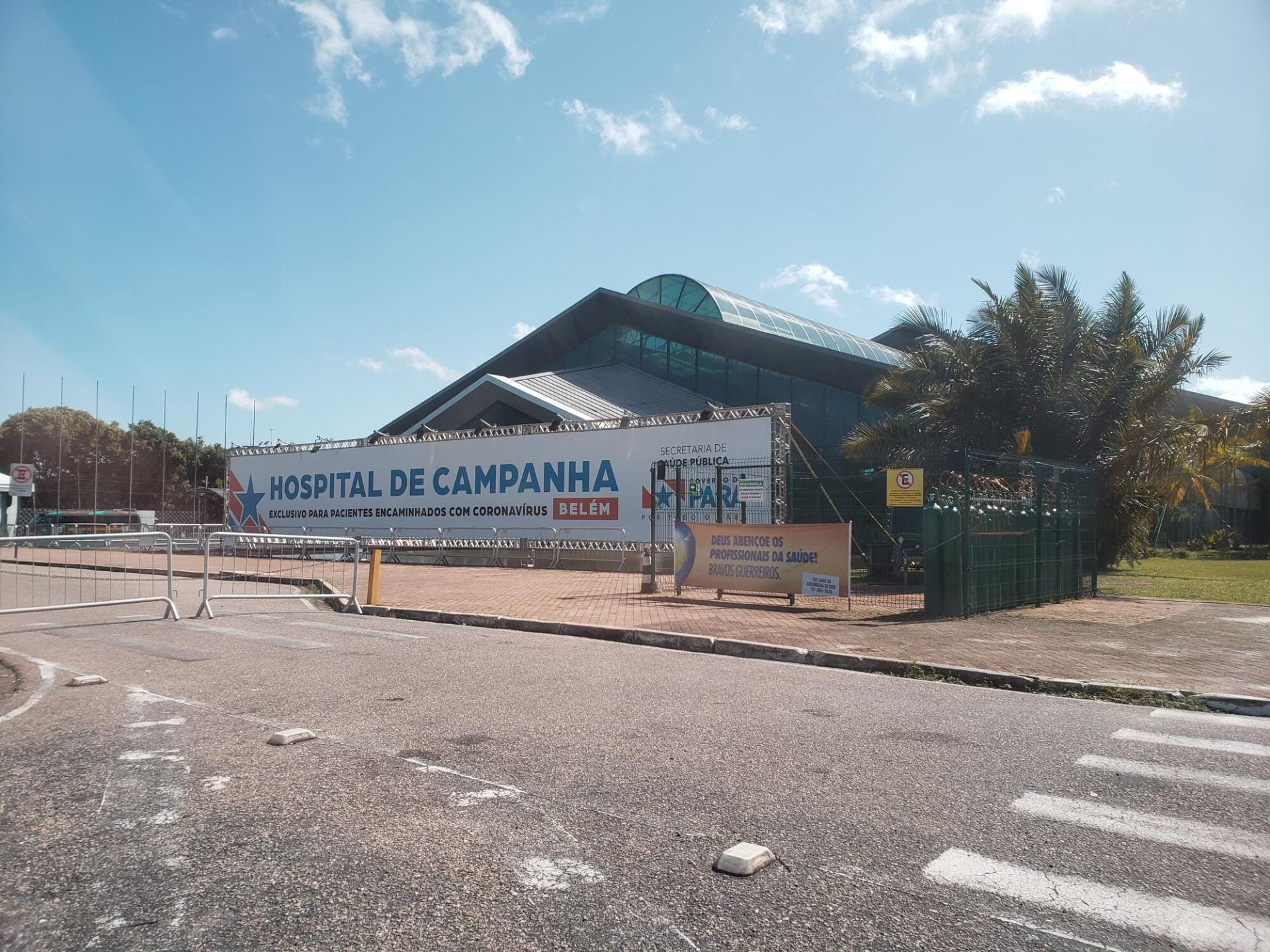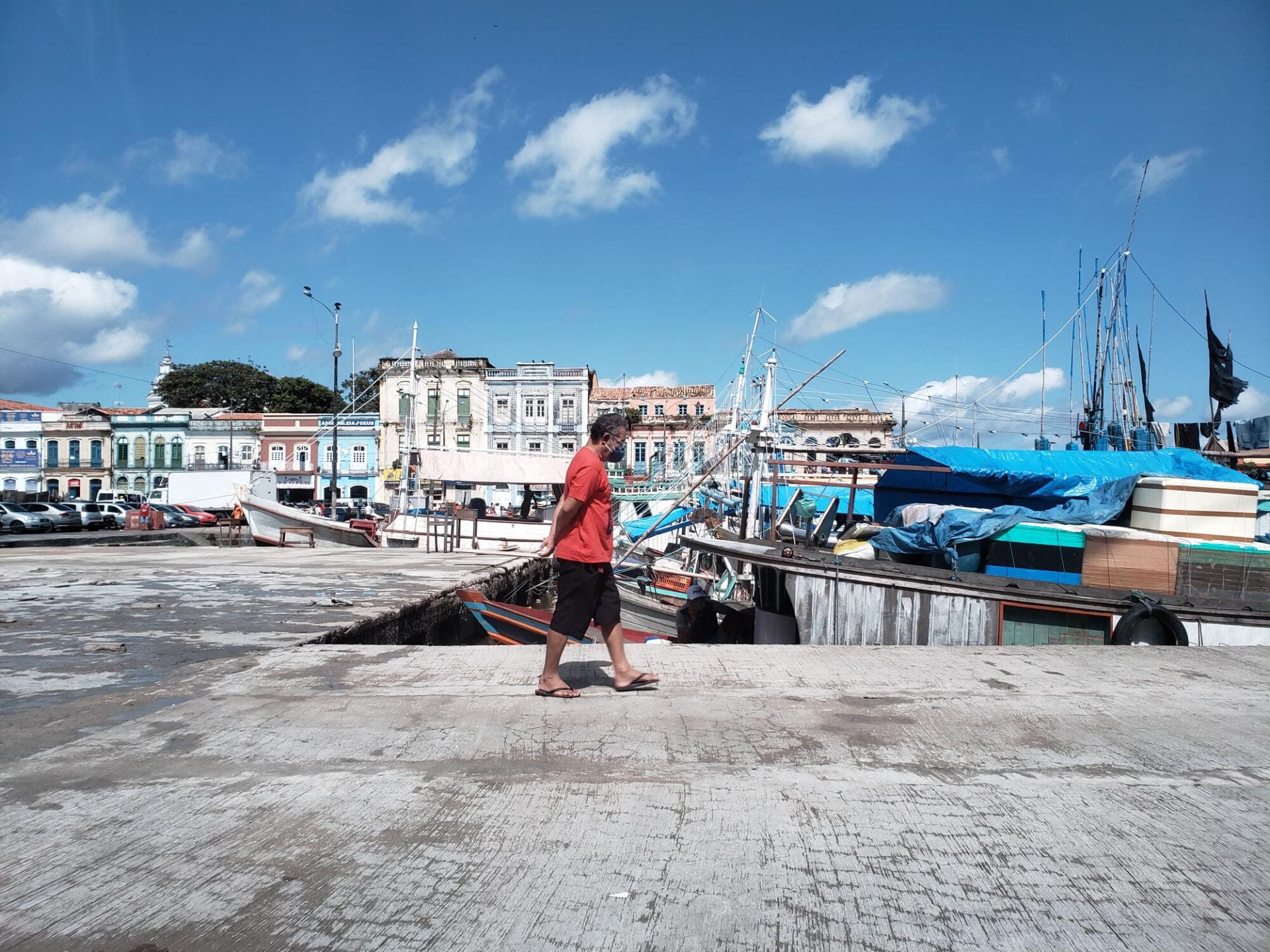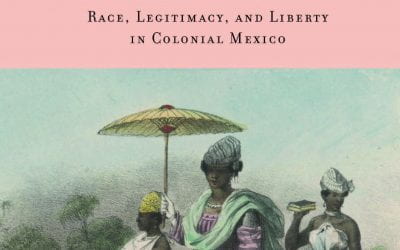Learning to Heal in an Amazonian Capital
It’s my 37th birthday, and I’m seventy days into social isolation in my hometown. Being from Belém has gifted me with a taste for the wonders of brega popular music, a knowledge of traditional herbal baths and an ability to cope with extreme heat and humidity. I like to think that it also taught me to improvise and create much from little, and to never shy away in the face of setbacks. It taught me joy can coexist with hardship.
However, as the coronavirus pandemic hits hard the city where mangos abound and millions gather every October for one of the world’s largest Catholic processions, Círio de Nazaré, I wonder if the Amazon’s port of entry in northern Brazil has ever known a grimmer year. We all—researchers, artists, maids, informal workers, Indigenous activists—are struggling in our everyday lives as the virus sweeps our city and country.
Trying to balance hope against sorrow, I look from the window of my home in the Marco district, where I was born and raised, and which was hit with particular force by Covid-19. I’m a few blocks away from what has become the country’s largest field hospital—formerly an airplane hangar converted into a convention center— where ambulances pull in with sirens wailing and red lights flashing.
As summer emerges from the rainier season (it’s always rainy in Belém!), state government squads pass disinfecting the Duque de Caxias Avenue by spraying a sodium hypochlorite solution. The usual vultures fill the sky, taking my thoughts on a walk through the crowds of shoppers at the Ver-O-Peso market, which is still operational.
For hundreds of years, Ver-O-Peso has been a staple in the local economy, with small stalls that bestow us with fried fish with açaí, cassava flour and fresh Amazonian fruit such as cupuaçu, bacuri and muruci. I think of the informal workers facing the dilemma between infection and lack of income there, as in other markets in Latin America.
Much of Belém’s population, like myself, descends from the native peoples of the Amazon. Much of our cuisine is also originally Indigenous. Among our most cherished food rituals—one that belenenses were forced to suspend in the current crisis—is gathering on sidewalks to drink tacacá before the sun sets.
Served in hollowed-out gourds known as cuias, tacacá is a broth combining shrimp with jambu leaves, which causes a pleasant numbness of your tongue and lips, and tucupi, a thick yellow soup extracted from the roots of cassava.
I sometimes take solace in recalling the textures, flavors and aromas of local street food, but disease now haunts even our everyday habits. I try to make room for thoughts of enjoyment, but they are frequently disrupted as the outbreak sweeps across Pará, Amazonas, Amapá and other neighboring states.
How can one find peace when the presidency openly downplays the pandemic, rejects quarantine measures and stimulates mistrust toward the scientific community? How can one find peace when the presidency expands the prescription of an anti-malaria drug that hasn’t been proved clinically effective for patients with Covid-19—one that could cause severe heart rhythm problems?
Also, although it’s no news that racism against Black and Indigenous populations is endemic in Brazil, the presidency’s mishandling of the pandemic is further exacerbating a pattern of deliberate negligence against people of color, who already suffer disproportionately from underlying health conditions such as diabetes and hypertension, and whose access to proper healthcare is limited.
Making a suture
As a Brazilian researcher working in British academia, I’m fortunate to do my job remotely, having access to a reliable Internet connection and communicating with colleagues on a regular basis.
My pre-pandemic workplan was to conduct fieldwork in several Brazilian cities from April on. As the outbreak was worsening here and in the United Kingdom, with various countries closing their borders and flights starting to be cancelled, it seemed prudent to fly from Manchester to Belém in late March, before travel restrictions became tighter.
I’m working as a Research Associate in the AHRC-funded project Cultures of Anti-Racism in Latin America. We are based at the University of Manchester, and have teams working with artists living in Argentina, Brazil and Colombia.
I’m looking at anti-racist practices in the work of contemporary Indigenous artists in Brazil, some of whom are originally from the Amazon.
On May 12, I was devastated to hear about the passing of one of the masters of Amazonian arts, Feliciano Lana, due to Covid-19. Lana died in São Gabriel da Cachoeira, in the Upper Rio Negro, Northwestern Amazonas, where healthcare facilities are grossly unprepared to cope with the pandemic.
I originally intended to arrange a research visit to the Belém Art Museum (MABE), which holds some of Lana’s works. As one could expect, the pandemic has had a significant impact on the hopes I had for fieldwork. Its effects on the networks in which Indigenous artists operate are proving to be profound.
Still, most of the Indigenous artists I’ve been talking to remain quite active online. I keep a routine of exchanging messages and collaborating with them. I also watch their live streamings, listening attentively to what’s important to them.
Lana was hugely important to Denilson Baniwa. An Amazonian artist increasingly recognized in Brazil and around the world for his provocative interventions into the coloniality of non-Indigenous visual culture, Baniwa wrote a tribute to Lana, talking about the incalculable significance of his creative energy.
Having studied at a non-Indigenous school, Baniwa became proficient in navigating the linguistic and visual codes used by whites. But he explains that those codes also became ingrained in him. “Now I need to heal from the idols of colonization that became so deep-rooted in me, and the only way for me to do that is to deface them […]. In order to heal, I must open that wound, and then make a suture,” he said in a talk at the São Paulo Art Museum (MASP) in July 2019.
A participant in this year’s Biennale of Sydney, Baniwa is one of the Indigenous Amazonian artists facing challenges with the cancellation or suspension of exhibitions, trips and other activities. Grieving the loss of several dear friends in Amazonas to Covid-19, Baniwa gets through the quarantine by keeping a prolific artistic production, having been invited by arts relief programs such as IMS Convida, for which he created Ritual Masks for a World in Crisis.
Business-as-usual and its wounds
In my journey from Manchester to Belém, I wondered if I had already been infected with the virus, considering mild symptoms I presented after a weekend visit to pre-lockdown London in late February. I landed in the Val de Cans International airport on March 22, after a tense 23-hours trip via Heathrow and Guarulhos, presumable hubs of infection. Belém was the only place among those where the temperature of incoming travellers was being checked for coronavirus-related fever.
Pará governor Helder Barbalho was one of the state leaders to defend quarantine measures, defying the denialism of the current president. Soon after my arrival in Belém, I heard Governor Barbalho urging the population to stay home and respect self-isolation. On May 4, an Ethiopian Airlines Boeing 787 landed in the Val de Cans airport, bringing hundreds of Chinese ventilators and infusion bombs to treat severe cases of the disease in Pará.
It was a glimpse of hope. It seemed like a better chance of survival would then be offered to those in need of intensive care in public and field hospitals in Belém, Santarém, Marabá, Breves, Capanema and other parts of the state. A few days later, however, ventilators had been proved to malfunction, with technical problems that made them unusable to treat the ill.
Since then, Barbalho filed for damage compensation from the suppliers, and had his home raided by the federal police in an investigation into the purchase of the ventilators. The whole situation became increasingly puzzling, as the current president had then forced the replacement of the federal police chief, leading former Justice Minister Sergio Moro to resign.
On May 6, Belém mayor Zenaldo Coutinho announced the highly controversial decree that classified maids as essential workers during the pandemic—a decision contrary to the rulings of every other state in Brazil. Coutinho argued that some professionals, such as doctors, need someone to take care of their households.
What such as a statement legitimates is that for patriarchal capitalism to keep business-as-usual, domestic workers in Belém, who in most cases are women of African and Indigenous ancestry, are to be exposed to high risks of contagion—not only when commuting to work in packed buses, but also at their employers’ households.
Back in early April, I went to buy medication for my parents in the nearest pharmacy. On the corner against it, I saw a Warao family that had fled Venezuela in search of food and shelter in Brazil. As they asked for spare change from passers-by, no masks covered their faces. They seemed so vulnerable to me, homeless in a foreign country.
The level of pain that the virus is inflicting in the Amazon is worsening chronic social and racial inequality for the urban minoritized populations, as well as affecting Indigenous peoples living in the forests in the cruellest ways—a scenario much aggravated by the criminally negligent maladministration of the presidency.
Learning to heal
Following pressure from business leaders to ease restrictions and kick-start the economy, on May 25, Belém lifted its lockdown, which had been in effect since May 7. Just like that premature reopening, terms like “new normal,” “post-pandemic” and “socially distanced shopping” sound delusional to me. While we’re in the midst of the storm, it seems too early to talk about any of them.
Exercising patience rather than hastiness is what Indigenous leader Ailton Krenak suggests we do when he criticizes the term “post-pandemic world”.
“If we keep yearning for the idea of a ‘post-pandemic world,’” says Krenak, “we will then ignore what the Earth really wants to tell us now. It would mean escaping that reality, and that is not a good thing. That’s why I say that we have to live each day one at a time. The day we’re living is today. Why should we rush to know what the post-pandemic will look like? We don’t even know how we’re going to get through this period. Such a yearning comes much more from people wanting to know what happens next than from actually needing to know it”.
Ambulance sirens keep roaring. I sometimes try to piece together how the fate of Belém fits into the broader picture of what’s developing in the world. But as the months go by, I’m rediscovering the pleasures of taking the time to simply witness the low and high tides of the Guamá River.
It’s my 37th birthday, and I take another look from the window. Even if for a fraction of a second, I feel my senses wandering through the mangrove swamps where scarlet ibises dance – and reaching as far as Combu Island, its scent of cacao permeating the air.
I breathe in and out, blowing a kiss to someone afar. Holding a bowl of tapioca porridge, I feel grateful for doing a job I so strongly believe in, and remind myself that joy can coexist with hardship.
It suddenly hits me that healing begins with slowing down. As we wait for a cure, learning how to do it is our homework.
Spring/Summer 2020, Volume XIX, Number 3
Jamille Pinheiro Dias was born in Belém, in the Brazilian Amazon, in 1983. She is a Research Associate at the University of Manchester, and has had previous appointments at Stanford University and University of São Paulo, where she received a Ph.D. in Modern Languages. She is interested in Indigenous arts and activism in Latin America, with a focus on Brazil.
Related Articles
Editor’s Letter – Eyes on COVID-19
Editor's Letter Documenting Covid-19 It’s been two years, two months and some days since we published Olivia Liendo’s powerful article “With Covid-19, We are All Immigrants.” Relating how friends, family and strangers came together to help her mother in Venezuela...
A Review of The Rebel Scribe: Carleton Beals and the Progressive Challenge to U.S. Policy in Latin America
This is how the adventure of the 25-year-old from Kansas begins: “I began to dream dreams, extravagant dreams. I would stay here in this city of the Aztecs and the Conquistadors ..
A Review of The Capital of Free Women: Race, Legitimacy, and Liberty in Colonial Mexico
Ever since James Lockhart published Spanish Peru in 1968, historians of colonial Latin America have mined the notarial archives to illuminate the daily lives of people who were largely…






